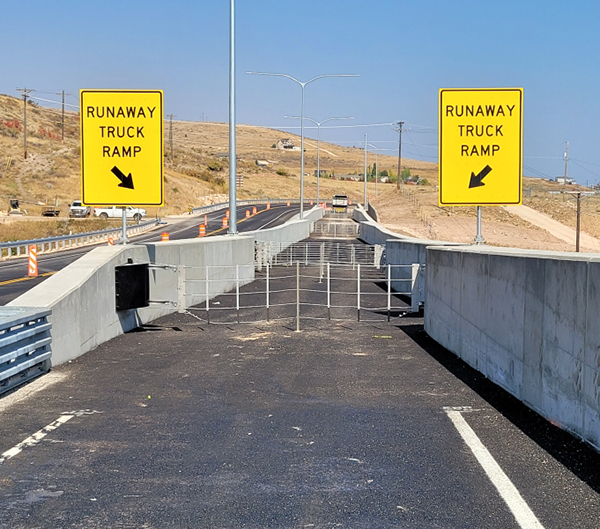Looking at Life in Lakeside:
Install a runaway truck ramp now at the Walmart intersection before (more) people die
By: Patrick O’Heffernan
Yesterday, a fully loaded gravel truck lost its brakes coming down the Libramiento hill into Ajijic. It collided with two cars and ended up on its side. Fortunately no one was hurt, but 3 cars were seriously damaged, traffic was stalled, and the driver barely escaped with his life.
As I drove by the accident, I thought of another lost-my-brakes accident at the end of December in Coahuila on Highway 57 near Saltillo when a tanker truck that lost its brakes killed 5 people and injured 15 before stopping. And the tractor-trailer that lost its brakes and rammed into a house in Chapala last December, killing one person
It is only a matter of time before this happens again in Lakeside with a loss of life. Anyone who drives the Carretera west to Jocotepec can hear the air brakes on the trucks – not their mechanical brakes – because the drivers are afraid that the mechanical brakes may not work. But air brakes don’t apply immediately like mechanical brakes do; they take a few seconds to build up and apply pressure. And if there is a leak in the system or a pump seal fails, there are no brakes.
It takes an 18-wheeler traveling at 40 miles an hour 525 feet to stop if its brakes are in good condition and it is on a level road. In reality, it takes much longer; slow reaction of the driver, slick roads, worn brakes, overloaded trailer, and a downward sloping road all increase this distance by hundreds of feet, or even render the brakes useless
The first line of defense against these tragedies isa brake inspection every 6 months with trucks that fail to be taken off the road until they pass inspection. México does have brake inspections, and the standards for Mexican trucks have been accepted by the US, but many Mexican trucks are operated by local owner-operators or families who work on slim profit margins and cut costs where they can.
The easiest way to save money is not to spend it – on maintenance, like brakes – and skip inspections. So brakes fail. Solving this problem with a Federally-enforced, comprehensive, incorruptible brake inspection and certification program applied to every truck is not realistically in the cards. So, how do we prevent more accidents like Tuesday’s rollover at Walmart?
An easy, inexpensive solution is a runaway truck ramp at the bottom of the Libramiento.
A runaway truck ramp is an exit that comes off of a highway designed to safely stop a speeding truck using gravel, sand, collapsible barriers and sometimes an incline . A properly designed ramp can stop a fully-loaded speeding truck in a few hundred feet, often with little damage to the vehicle.
When the driver of a loaded truck comes down the Libramiento, hits the topes and realizes that the brakes are gone, he or she can swerve the truck into an escape ramp parallel to the Libramiento which will stop it before it reaches the Carretera. Signs warning drivers to test their brakes ahead of the ramp will allow them to use it if they need it.
There is room for a ramp next to the Libramiento before the intersection. The relative cost is relatively minimal – land purchase, grading, sand and gravel, collapsible barriers, a safety wall. And it needs little maintenance. If it saves one life, it is worth it.
Of course there are politics. Neither the Carretera nor the Libramiento are Chapala municipal roads; they are Federal. Getting the Federal agency to deal with the Walmart intersection took years and everyone pretty much agrees they didn’t help much. Getting them to build a runaway truck ramp could take years more, unless there is a spectacular accident and even then, who knows? But solving the problem can start locally; the new Chapala Director of Movilidad – the former Police Chief of Dallas, Texas , who was born here – is a problem solver,
get-it -done kind of guy. Perhaps he can light some fires under the right Federal chairs to prevent another runaway truck smashing into cars or even people on the Libramiento.
Los comentarios están cerrados.
© 2016. Todos los derechos reservados. Semanario de la Ribera de Chapala








